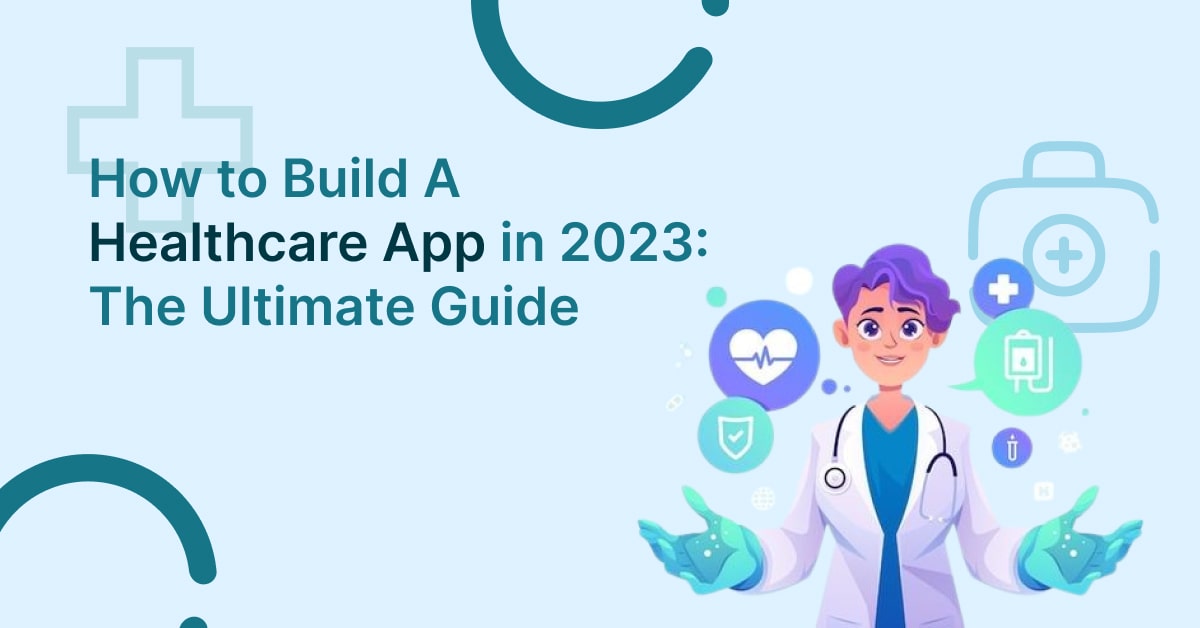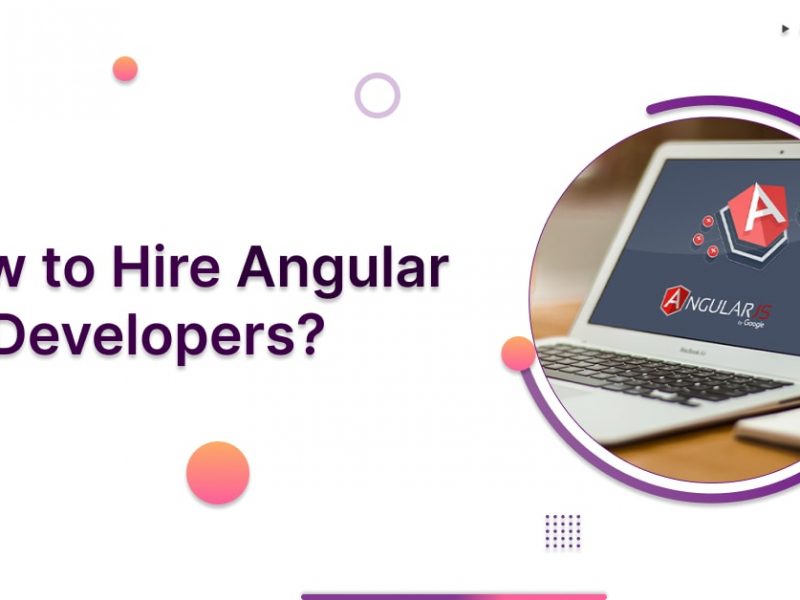Last updated on April 24th, 2024 at 09:01 am
Managing healthcare services includes a lot of difficult tasks, such as taking care of patients and handling paperwork. This makes things less efficient, which lowers the standard of the healthcare services that are given. To make your healthcare app development process run more smoothly, you need to build a healthcare application. It is easier to provide high-quality care and handle routine chores when you make a web app.
This guide is for anyone who wants to learn how to build a healthcare app, whether they are a seasoned developer, a healthcare professional who wants to try something new, or a start-up business.
This detailed guide will show you all the important steps, features, and tech stacks to consider to make a best healthcare app in 2023.
What is A Healthcare App?
It is a software program accessed through a browser, mobile app, or internet-enabled system. They are specifically designed to provide healthcare services such as patient records management, scheduling appointments, telemedicine, billing and insurance, and many more.
Healthcare apps can operate independently or be incorporated into the larger system. Apps for healthcare can be applied for several things, such as:
Health Monitoring: To assist individuals in managing chronic diseases, healthcare apps can track and monitor different health indicators such as heart rate, blood sugar levels, and blood pressure.
Patient Care: Medical personnel can use healthcare apps to manage patient data such as medications, medical histories, appointments, and test results.
Medical Research: Healthcare apps can collect data for scientific research, such as clinical trials to improve healthcare results.
Fitness and Wellness: It can provide advice on fitness and wellness, such as workout plans, dietary recommendations, and meditation techniques.
Healthcare Application Statistics
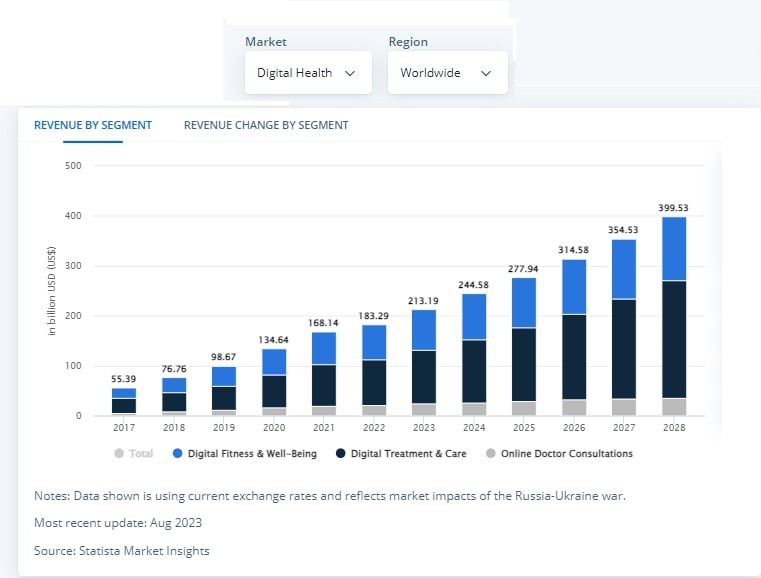

Source: Statista
With revenue predicted to expand at a 13.94% annual rate (CAGR 2023–2028), the market will likely reach a projected volume of US$363.70 billion by 2028. In 2024, the digital health industry is expected to generate US$189.40 billion in revenue.
Compared globally, China will produce the largest income ($57,140.00 million in US dollars in 2023). The average revenue per user (ARPU) is anticipated to be $51.84. Digital Treatment & Care is the biggest market, with a total revenue of US$108.00 billion in 2023.
Why Invest in Healthcare App in 2024?
Investing in healthcare apps in 2024 can aid in increasing the demand for Telemedicine, improve patient engagement, boost revenue streams, increase access to healthcare, and offer customized patient care. These factors provide lucrative opportunities for investors in the evolving healthcare industry.
Let’s check out these factors in detail.
Increased Demand for Telemedicine
The COVID-19 pandemic has increased the use of Telemedicine as it enables patients to consult with healthcare professionals remotely. This trend is estimated to continue as individuals have become highly comfortable with virtual healthcare visits.
Investing in a healthcare application can aid in increasing the demand and offer a healthcare platform to providers to provide telemedicine services.
Better Engagement with Patients
A healthcare mobile app can better involve patients by giving them access to medical data, the ability to schedule appointments, medicine alerts, and personalized health information. A mobile app can improve patient results and happiness by getting people more involved in managing their health care.
Increased Revenue
Investing in a healthcare app can lead to generating more money. By giving video services, healthcare providers can reach more patients, even those who live in rural places or have trouble moving around.
The app can also make it easier to pay bills online and simplify routine tasks, cutting costs and making it easier to collect money.
Better Access to Healthcare
A healthcare app can help people in different areas to get better access to healthcare services. No matter where they are, patients can talk to medical professionals, which saves them time and money on travel.
People who live in rural or neglected areas and may not have easy access to healthcare services can benefit most from this improved mobility.
Personalized Patient Care
A healthcare app can use data analytics and patient information to provide personalized patient care. It can make customized health suggestions, keep track of health data, and send personalized health instruction materials.
This customized method can give people the power to take charge of their health and improve it.
Monetization Models of Healthcare App
There are different ways to make money from a healthcare application, based on what kind of app it is and who it’s meant for. These are some popular ways that healthcare apps consider to make money:
Subscription Model: People who want to use the healthcare app and its functions pay a monthly fee. For example, a healthcare site that charges a monthly fee for endless video sessions.
Freemium Model: The app’s basic features are free, but you must pay to access its more advanced or premium features. For instance, a health and fitness tracking app might offer basic features for free, but it would charge for customized workout plans or diet tips.
Pay-Per-Use Model: Users are charged based on how much they use the app or what steps they take within it. A good example is an app that lets users to pay for specific health tests that they take.
Data Monetization: Making money by selling user data to healthcare experts or organizations or by making user data anonymous and combining it with other user data to get new insights. For example, collecting and removing identifying information from patient records to help medical study.
Affiliate Marketing: It means working with healthcare-related businesses to earn a fee for every user who buys something through your app. For example, recommending and linking to health and fitness goods in the app and getting paid a fee for each sale.
In-App Advertising: It means showing ads inside the app and getting paid by merchants. For example, providing health-related ads to people based on their interests in health and fitness.
Steps to Develop Healthcare Application
The steps below give you a general idea of how to build a healthcare app. Needs may differ depending on the application type and how complicated it is.
During the healthcare app development process, it’s always best to talk to experts and follow the best practices in the field.
Step 1: Figure Out A Problem, Get A List of Needs, and Do Market Research
Finding a problem or need in the healthcare business that your application will try to meet is the first thing you should do when making a healthcare application. It could mean anything from making it easier to make appointments to make it easier for patients to talk to each other.
Once you know the problem, talk to healthcare workers, possible users, and other parties about their needs. Do a study on the market to find out who your competitors are and to make sure there is a need for your answer.
Example: Let’s say you want to create a video app that lets people talk to doctors from afar. The problem you’re trying to solve is that people who live in distant places have difficulty to get healthcare services when needed.
Step 2: Hire A Healthcare Mobile Application Development Company
If you don’t have the technical know-how, hiring a healthcare mobile application development company or a group of skilled workers who have worked on healthcare apps before is best. They can help you to realize your idea by ensuring the app is properly created and built to meet industry standards.
Example: Research and choose a respected development business with experience making telemedicine systems and healthcare apps. Before you decide, look at their work, knowledge, client reviews, and prices.
Step 3: Make A Wireframe and Write the UI/UX Code for Your Healthcare App
Wireframing is the process of making a picture of the structure and plan of your application, including a list of its functions and user interface (UI). It helps you to consider the user’s trip and how they will connect with the app. After you finish the sketch, move on to the UI/UX design. Ensure the interface is easy for your target audience to use and understand.
For example, work with a UI/UX designers to make wireframes that show your healthcare platform screens and how users will move through them. It could include screens for registering patients, making appointments, live consults, and managing prescriptions.
Step 4: Develop A Healthcare App
The development process starts once the wireframes and UI/UX design are ready. Based on your needs and ideas, the development team will build your healthcare application’s front-end and back-end parts. They will add features, connect APIs (like payment methods or electronic health record systems), and ensure the app is safe, flexible, and works well.
Example: When working on the front end, the developers will use languages like HTML, CSS, and JavaScript, as well as frameworks like React and Angular. Frameworks and programming languages like Python or PHP may be used for the back end.
Step 5: Make Sure Your App is HIPAA-Compliant
Health Insurance Portability and Accountability Act (HIPAA) compliance is important for healthcare apps to keep patient data and privacy safe. It’s important to ensure that your application has HIPAA-compliant security features like data protection, access controls, and audit logs while it’s being built.
For example, you should use secure user login, secured connections (HTTPS), role-based access controls, and safekeeping for electronic health data to ensure you follow HIPAA rules.
Step 6: Testing of Healthcare App
Testing your healthcare application thoroughly is important to ensure it works as planned and gives users a smooth experience. Do a full set of tests, such as functional testing, user testing, speed testing, and security testing. Find and fix bugs or other problems before moving on to the launch step.
Example: Use different devices and sites to test your telemedicine platform’s features, like making appointments, video chats, and managing prescriptions. Ensure that user info is kept safe and that the app works well with various loads.
Step 7: Deployment of Healthcare Application
After the creation and testing parts are over, it’s time to put your healthcare application into a live setting. Arrange hosting, set up servers, and ensure the technology is in place to meet the program’s needs. Do one last round of testing in the live setting to ensure it works before letting people view it.
For example, put your telemedicine platform on a private site, set up the domain settings, and ensure that any third-party services or APIs work properly with it. After deploying the app, keep a close eye on it to ensure any problems are fixed quickly.
Features to Implement in Healthcare App Development Process
The below features are customized according to specific needs and the scope of healthcare apps:
Patient Panel
| Features |
Descriptions |
| Registration and Login | Enable patients to create an account and log in securely to access the app’s features and services. |
| Personal profile | Patients can develop and manage their personal information, contact details, medical history, and insurance data. |
| Appointment scheduling | Offer a user-friendly interface for patients to schedule appointments with healthcare professionals. It includes features such as choosing the preferred doctors, selecting available time slots, and receiving confirmation notifications. |
| Telemedicine Consultations | Integrate video consultation competencies, permitting patients to have remote consultations with doctors. It includes virtual waiting rooms, secure video conferencing, and file sharing for medical records or test results. |
| Prescription management | Allow patients to view and manage their prescriptions online. It may include prescription refills, medication reminders, and access to medication data. |
| Health records and medical history | Patients can securely store and access their medical records, test results, and other relevant documents. It provides features like viewing, downloading, and sharing medical data with healthcare providers. |
| Secure Messaging | Execute the messaging system that enables patients to communicate securely with healthcare professionals. It can be used for non-urgent inquiries, general communication, and sharing medical data. |
| Health Education and Resources | It includes educational content, articles, and resources associated with different health conditions, wellness tips, and preventive care. |
| Notifications and Reminders | Send automated notifications and reminders to patients for medication refills, upcoming appointments, and other relevant updates. |
Doctors Panel
| Features |
Descriptions |
| Registration and Login | Permits doctors to register and log in securely to access their customized panel. |
| Doctor Profile | Allows the doctors to create and manage their profiles, such as specialization, contact data, and qualifications. |
| Appointment Management | Provide doctors with an inclusive view of their appointments, letting them accept, reschedule, or cancel appointments as required. |
| Telemedicine Consultations | It permits doctors to conduct video consultations with patients. It includes features such as secure video conferencing, virtual waiting rooms, and access to medical records during the talks. |
| Electronic Health Records (EHR) | Allow doctors to access and update patient health records such as diagnoses, medical history, prescriptions, and treatment plans. |
| Prescription Management | Permit doctors to prescribe medications and manage prescriptions for their patients electronically. It involves the features of sending drugs to pharmacies and setting medication instructions. |
| Secure Messaging | Execute the secure messaging system that enables doctors to communicate with patients by sending test results, follow-up instructions, or responding to patient inquiries. |
| Analytics and Reports | Provide analytics and reports to doctors on patient interactions, appointment schedules, and other relevant information for tracking their activities and making informed decisions. |
Admin Panel
| Features |
Descriptions |
| User Management | Permit administrators to manage the patient and doctor accounts, such as account verification, user registration, user roles, and permissions. |
| Content Management | Allows administrators to manage the content and resources available for patients and doctors, such as adding or updating educational articles, FAQs, and health resources. |
| Appointment Management | Provide tools to administrators to manage and monitor appointment schedules, such as the competency to add or delete appointments, view availability, and generate reports. |
| Analytics and Reporting | Offer inclusive analytics and reports to administrators on different aspects of the app, like appointment statistics, user activity, and system performance. |
| System Configuration | Permit administrators to configure the system settings such as email notifications, integration with third-party services, and personalization options. |
| Security and Compliance | Execute the features to ensure the app’s security and compliance, such as user data protection, HIPAA compliance measures, and system backups. |
| Support and Helpdesk | Allow administrators to assist and support users, such as handling user issues, managing support tickets, and responding to inquiries or feedback. |
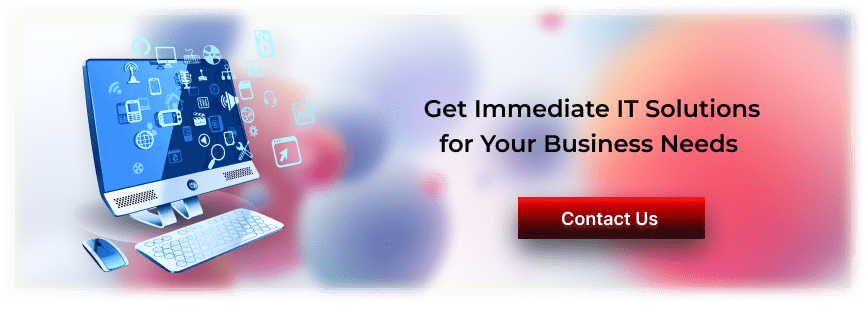

Examples of Best Healthcare Apps
Different healthcare apps exemplify some aspects of the healthcare industry, including patient engagement and practice management. They demonstrate the functionalities that modernize healthcare apps to improve operational efficiency and patient care.
Luma Health


It emphasizes patient engagement and communication. Luma Health provides features such as reminders, scheduling, and on-time messaging. It aids in improving the patient experience and streamlines communication between healthcare professionals and patients.
Clearwave
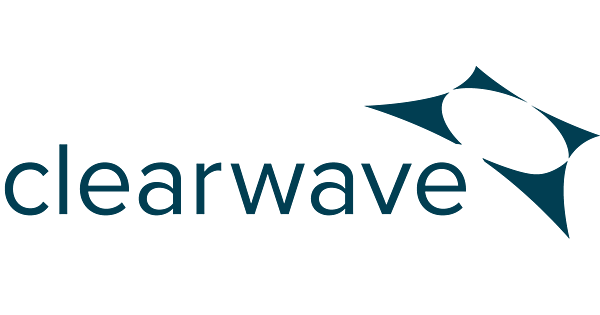

Offers solutions for patient check-in and registration. It offers features such as insurance verification and payment processing to improve the front-end healthcare service processes. It may streamline patient registration, decrease paperwork, and enhance administrative efficiency.
MyChart
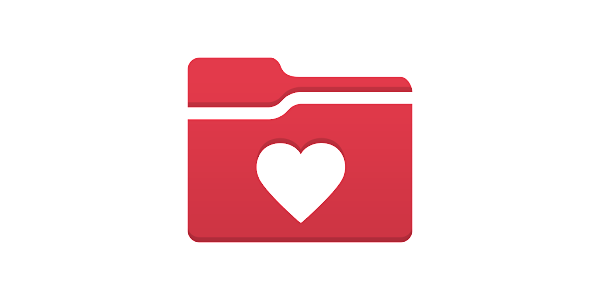

It is an epic systems product that offers patient portal services. MyChart facilitates secure access to health records, appointment scheduling, and communication with healthcare providers. It empowers the patients to access health data easily and fosters contact with their healthcare professionals.
Solutionreach
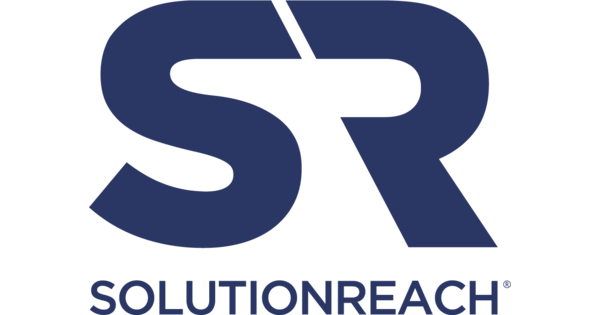

Solutionreach is known for patient engagement and communication tools. It has different features such as patient surveys, appointment reminders, and targeted messaging. It aids to enhance patient engagement, improve communication, and increase patient satisfaction.
Athenahealth
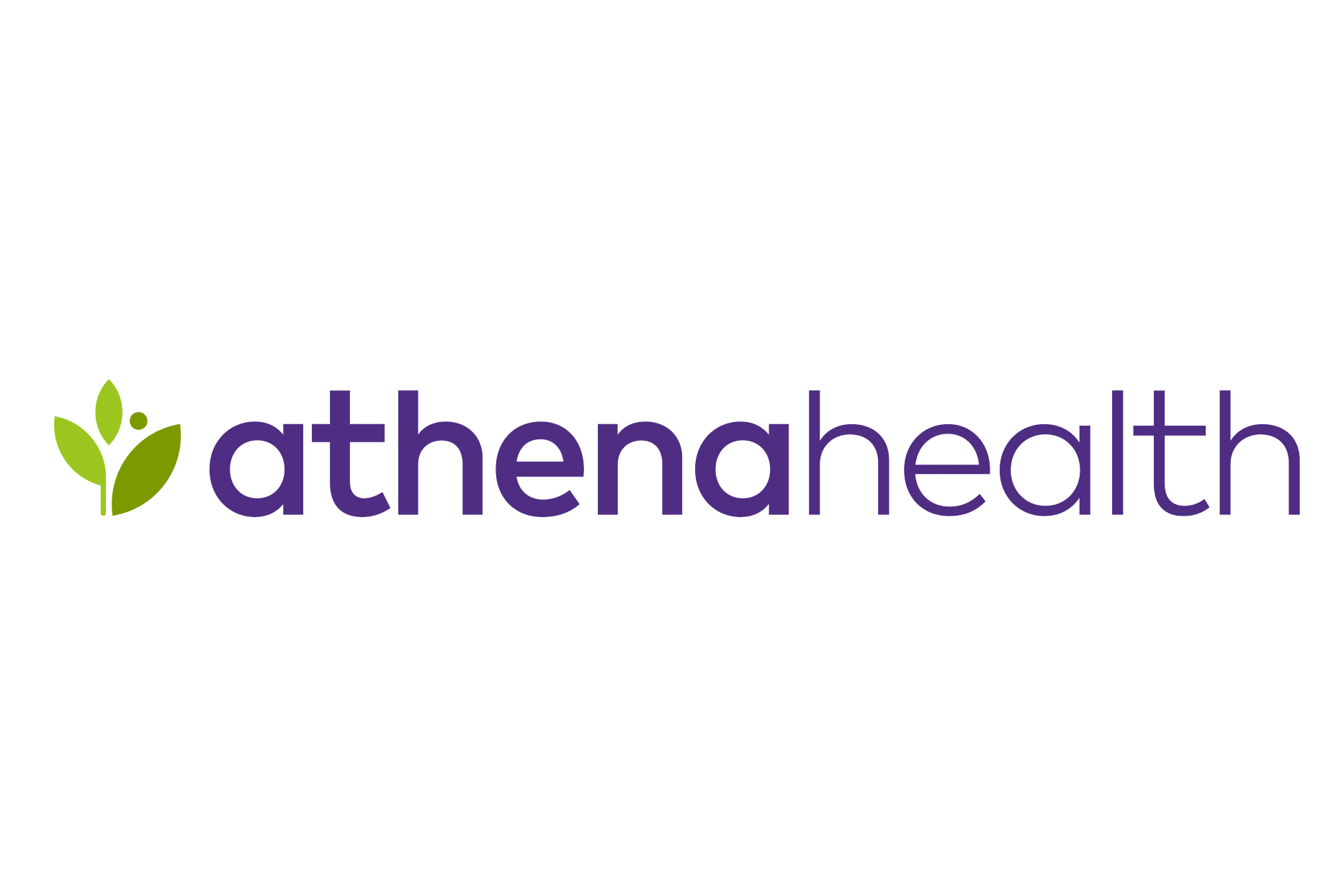

It provides healthcare solutions such as practice management, revenue cycle management, and electronic health records (EHR). Athenahealth supports healthcare professionals with inclusive solutions for managing patient records, appointments, and financial aspects of their practice.
Reliable Platforms to Find Developers for Healthcare App Development
The right choice relies on your project requirements, budget, and preferences. Always thoroughly examine the candidates or firms before making the decision.
| Hiring Option |
Considerations |
Where to Hire |
| Freelance Platforms | It is good for specific tasks or short-term projects. Feasible for small jobs or particular skills. Ensure to review profiles and past work. | Freelancer, Toptal, and Upwork |
| Dedicated Agencies | It provides a team of diverse skills for end-to-end development. Ensure to check reviews and portfolios. | GoodFirms, Codementor, and Clutch |
| Outsourcing Firms | Cost-effective, particularly in regions with less labour cost, but communication and time zone differences may be considerations. | Intetics, BairesDev, and Accelerance |
| Job Boards | It is ideal for hiring full-time in-house developers. Look for applicants with healthcare industry experience. | LinkedIn, Indeed, and Glassdoor |
| Professional Networks | Connect to experienced developers directly. Identify their expertise and look for those experienced in healthcare projects. | LinkedIn, Overflow, Stack, and GitHub |
How Much Does It Cost to Develop a Healthcare Application?
Healthcare app development costs may range from $20,000 to $150,000 or more. However, a healthcare app’s price can vary widely depending on factors such as the app’s features, complexity, design, and the development team’s rates.
In this section, we go through different factors that impact the cost of developing a healthcare app. So, let’s explore it.
Cost Based on Complexity of Healthcare App
The table demonstrates how app complexity can affect the healthcare app development cost. The costs in the table are based on data from reputable sources such as Salary.com Clutch and profiles on platforms like Fiverr, Arc, Upwork, Toptal, and Freelancer.
It aids in determining the hiring cost range for app developers.
Let’s check out the average healthcare app development cost.
| App Complexity | Features Include | Approximate Cost Range |
| Low Complexity | basic analytics, appointment scheduling, and Basic user profiles | $10,000 – $30,000 |
| Medium Complexity | secure messaging, electronic health records (EHR) integration, and Telemedicine | $30,000 – $100,000 |
| High Complexity | Real-time monitoring, Interoperability with other systems, and AI-driven diagnostics | $100,000 – $500,000+ |



Cost Based on the Location of Developers You Hire
Here is the table that shows how the cost of developers impacts based on their location.
| Country | Average Cost per Hour (USD) |
| United States | $100 – $150 |
| United Kingdom | $80 – $120 |
| Canada | $80 – $120 |
| India | $25 – $50 |
| Ukraine | $30 – $60 |
| Philippines | $20 – $40 |
But, the actual cost may vary depending on project complexity, specific needs, and the selected service provider. To understand the exact price, you can contact our developers.
Moving onto the next section, let’s discuss the timeline of healthcare application development.
How Much Time Does It Take to Develop a Healthcare Application?
The timeline for healthcare app development can take around two months to 1+ years. However, it relies on the complexity of app development, such as low complexity, medium complexity, and high complexity. Different factors may also affect the timeline of healthcare app development, such as team size, project scope, and technical challenges.
Hence, consulting with the healthcare mobile application development company is significant to find a feasible timeline for developing healthcare apps.
Let’s check out the breakdown of the healthcare app development timeline.
| Complexity | Examples | Types of Features |
Timeline |
| Low Complexity | Online appointment system | appointment scheduling and User profiles | 2 – 4 months |
| Medium Complexity | Telemedicine platform | EHR integration and Teleconsultation | 4 – 8 months |
| High Complexity | AI-driven diagnostic platform | Interoperability and Real-time monitoring | 8 months – 1+ years |
Technology Stack Used to Develop a Healthcare Application
The selection of technologies may vary depending on the specific needs of the healthcare app and the development team’s preferences.
Let’s check out some tech stacks used to develop healthcare apps.
|
Technology Layer |
Technology Options |
| Front-end Framework | React, Angular, Vue.js |
| Back-end Framework | Node.js, Ruby on Rails, Django, ASP.NET, Laravel |
| Database | MySQL, PostgreSQL, MongoDB, Firebase, Oracle |
| Server | Nginx, Apache, Microsoft IIS |
| Cloud Platform | AWS (Amazon Services), Google Cloud Platform, Azure |
| APIs | RESTful API, GraphQL, SOAP |
| Authentication | OAuth, JWT (JSON Tokens), OpenID Connect |
| Communication | Sockets, Socket.io |
| Testing | Jest, Mocha, Jasmine, Selenium |
| Version Control | Git, SVN |
| Deployment | Docker, Kubernetes, Heroku, AWS Elastic Beanstalk |
| Security | SSL/TLS, OWASP guidelines, HIPAA compliance (if required) |
How eBizneeds Can Help You with Healthcare App Development?
You can trust eBizneeds to help you with healthcare app development. They have a lot of experience that will help your project to go further. We ensure compliance, security, and easy connection with current systems by knowing a lot about healthcare laws and the specifics of the business.
Our experienced team is great at making solutions that focus on the patient. These solutions include private platforms, telemedicine, and strong EHR integration. We make custom healthcare apps that improve patient interaction and streamline processes using cutting-edge technologies and fast methods.
eBizneeds puts accuracy, speed, and user satisfaction as the top priorities from the idea stage to the launch. It will set up your healthcare app for success in 2023 and beyond.
Trust us to help you to find your way through the complicated world of digital healthcare so that you can use new solutions to make a lasting difference in the future of healthcare.
Conclusion
In 2024, the healthcare business is where new ideas and practical needs meet. Technology is helping to make things better. Building a healthcare app takes more than just knowing how to code. You need to know much about how healthcare processes work, be committed to user-centered design, and be dedicated to compliance and security.
Remember that the end goal is to make an app and help to build a healthcare system that values speed, accessibility, and care focused on the patient. Your work affects people who want to improve their health, whether you’re making a telemedicine platform, an EHR system, or a patient involvement app. It’s more than just lines of code.
As you move forward, keep an eye on new technologies, follow the rules, and always put the patient, the end user, at the centre of your development path. There are a lot of options, and many people could make a change in healthcare.
FAQs
Q1. What are the key considerations for building a healthcare app in 2024?
A: Some important things to think about are healthcare laws (like HIPAA), putting security first, making sure that new and old systems can work together, and focusing on user experience and usability.
Q2. Which technologies are trending for healthcare app development in 2024?
A: New technologies are becoming more popular, such as AI, bitcoin, and cloud computing. Frameworks like React and Angular are still popular for front-end development, and Node.js is still popular for back-end development.
Q3. How can I ensure the security and compliance of my healthcare app?
A: Establish strong security measures and regularly check and follow healthcare laws like HIPAA. To ensure compliance, work with a team that knows much about hospital IT and security.
Q4. What are the essential features of a healthcare app in 2024?
A: Secure patient access, appointment booking, Telemedicine, the ability to connect to electronic health records (EHRs), and real-time contact tools for healthcare workers are all important features.
Q5. How long does it typically take to develop a healthcare app in 2024?
A: Development times depend on how complicated the project is. An easy app might take two to four months, a fairly hard app four to eight months, and a very hard app eight months or more than a year. The timeline depends on features, team size, and the technology used.



Naveen Khanna is the CEO of eBizneeds, a company renowned for its bespoke web and mobile app development. By delivering high-end modern solutions all over the globe, Naveen takes pleasure in sharing his rich experiences and views on emerging technological trends. He has worked in many domains, from education, entertainment, banking, manufacturing, healthcare, and real estate, sharing rich experience in delivering innovative solutions.
